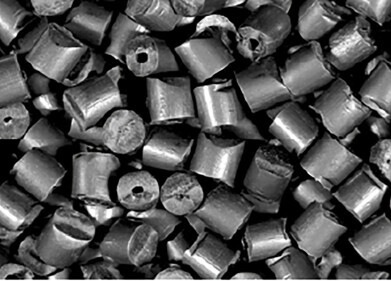Biofuel Industry News
How Are Alternative Fuels Analysed?
Jul 30 2022
From jumbo jets to recreational vehicles, alternative fuels are gaining traction across a wide range of industries. Analysis plays an important role in assessing key parameters such as viscosity and freezing point, monitoring emissions like CO2 and NOx, and optimising performance. Below, we take a closer look at how alternative fuels are analysed and why the process is so important.
The role of ASTM International
ASTM International, a global standards organisation that develops and publishes technical benchmarks for a plethora of products, is a leader in alternative fuel analysis. Around the world, companies use ASTM standards to analyse alternative fuels and assess important parameters.
The ASTM D7544-12(2017) Standard Specification for Pyrolysis Liquid Biofuel is one of many standards published by the organisation. The specification outlines testing methods for biomass-derived pyrolysis liquid biofuels, which are gaining traction as a substitute for traditional petroleum-derived fuels.
Elemental analysis
Elemental concentrations determine the suitability of alternative fuels for different applications. Analysis methods are used to identify and quantify elements such as calcium (Ca), manganese (Mn), nickel (Ni) and zinc (Zn). Inductively Coupled Plasma Emission Spectrometry (ICP-OES) is one of the most popular techniques for elemental analysis of drop-in alternative fuels, with data used to determine quality, characteristics and suitability for combustion engines.
Developing Sustainable Aviation Fuels
Analytical methods are central to the development of Sustainable Aviation Fuels (SAFs). Techniques like flash point testing (to determine flammability) and freeze point testing (to determine the formation of solid hydrocarbon crystals) help companies like NESTE develop sustainable jet fuels that are safe, efficient and affordable. The company’s MY Sustainable Aviation Fuel™ offers incredible performance in cold weather, with a freeze point of -47°C or lower.
Over the next decade, the New Market Opportunities - Future Market Insights report forecasts an extraordinary CAGR of 60% for the SAF sector. This correlates with calls from the International Air Transport Association (IATA) for governments to support the uptake of SAFs through incentives.
“Governments don’t need to invent a playbook,” says Willie Walsh, director general at the IATA. “Incentives to transition electricity production to renewable sources like solar or wind work. As a result, clean energy solutions are now cheap and widely available.”
If governments were to launch comparable incentives for SAF, Walsh maintains availability could increase to 30 billion litres by 2030. “Though still far from where we need to be, it would be a clear tipping point towards our net-zero ambition of ample SAF quantities at affordable prices,” he adds.
Want to know more about the SAF movement? Dr. Raj Shah, an expert at Koehler Instrument Company, spotlights the latest innovations in ‘Recent Advances in the Sustainable Aviation Industry’.
Digital Edition
PIN 25.2 Apr/May
May 2024
Safety - Carbon monoxide toxic and flammable gas detection Analytical Instrumentation - Density: A fundamental parameter at critical stages within the petroleum sector - Advancements and...
View all digital editions
Events
Jul 10 2024 Birmingham, UK
Thailand Oil & Gas Roadshow 2024
Jul 11 2024 Rayong, Thailand
Jul 20 2024 Denver, CO, USA
Jul 21 2024 Cape Town, South Africa
Jul 24 2024 Bogata, Colombia


















